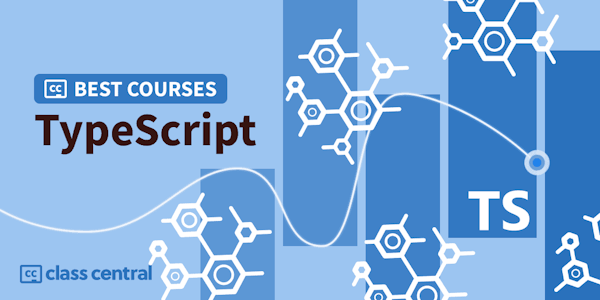- Module 1: This module introduces you to the TypeScript language and shows you how to set up a TypeScript development environment.
- Learn how TypeScript is an improvement over JavaScript for web development.
- Select a TypeScript editor.
- Install TypeScript.
- Set up a TypeScript project in Visual Studio Code.
- Module 2: Learn about the available types and how to associate them with variables.
- Explain the advantages of declaring typed variables in TypeScript.
- Declare variables using primitive types.
- Declare variables using object types.
- Declare variables using union and intersection types.
- Module 3: Learn how to use interfaces to define object types.
- Explain the reasons for using an interface in TypeScript.
- Declare and instantiate an interface.
- Extend an interface.
- Declare an interface with custom array types.
- Module 4: Learn how to develop typed functions by using TypeScript.
- Explain the benefits of using types in functions.
- Write functions that have required, optional, default, and rest parameters.
- Define function types using type aliases or interfaces.
- Module 5: Learn how to declare and instantiate classes in TypeScript.
- Explain how you can use TypeScript classes describe the shape of objects.
- Declare a class using TypeScript.
- Instantiate a class using TypeScript.
- Apply access modifiers to a class.
- Define static properties in a class.
- Declare a class that extends another class.
- Declare an interface to ensure class shape.
- Determine when to use an interface or a class to define the structure of an object.
- Module 6: Learn how to define generics in TypeScript.
- Identify use cases for generics.
- Define a generic function.
- Declare a generic interface.
- Declare a generic class.
- Implement generic constraints.
- Module 7: Learn how to access external libraries from TypeScript.
- Organize code using modules.
- Import an external type library.
- Module 8: Learn how to use TypeScript namespaces' to organize code.
- Explain the purpose of namespaces.
- Implement single-file namespaces.
- Implement multi-file namespaces.
- Explain the design considerations for using namespaces and modules.
In this module, you'll:
In this module, you will learn how to:
In this module, you will learn how to:
In this module, you will learn how to:
In this module, you will:
In this module, you will:
You will learn how to:
In this module, you will learn how to:





